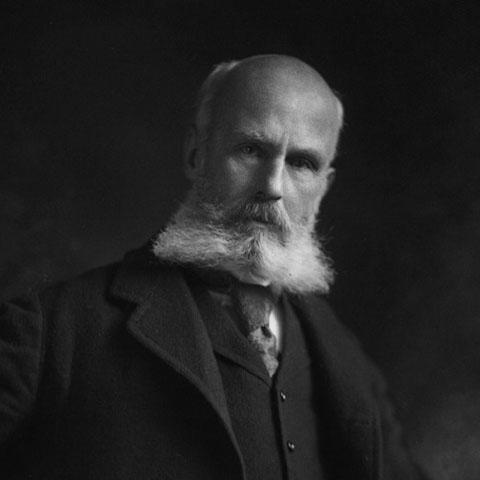 On the East Coast, interest in Buddhism rose in the 1870s through the influence of prominent figures like Henry David Thoreau and H.P. Blavatsky, who founded the Theosophical Society with Henry Steel Olcott. Many of these East Coast Buddhists drew spiritual inspiration from what they considered “exotic” or “ancient” Buddhist texts and ideas.
On the East Coast, interest in Buddhism rose in the 1870s through the influence of prominent figures like Henry David Thoreau and H.P. Blavatsky, who founded the Theosophical Society with Henry Steel Olcott. Many of these East Coast Buddhists drew spiritual inspiration from what they considered “exotic” or “ancient” Buddhist texts and ideas.
View full album
Meanwhile on the East Coast, Buddhist ideas sparked an intellectual conversation among a number of Euro-Americans. In the mid-19th century, Henry David Thoreau is said to have translated part of the Lotus Sutra from French into English. His regard for the Buddha is evident in his essay “A Week on the Concord and Merrimac,” where Thoreau writes: “I know that some will have hard thoughts of me, when they hear their Christ named beside my Buddha, yet I am sure that I am willing they should love their Christ more than my Buddha, for the love is the main thing…” In the 1870s, Edwin Arnold’s famous rendition of the life of the Buddha, The Light of Asia, crossed the Atlantic and became the first Buddhist bestseller in America.
Quite a number of intellectuals and spiritually-minded people took a keen interest in Buddhism in the late 19th century. Colonel Henry Steel Olcott, along with Helena Petrovna Blavatsky, founded what they called the Theosophical Society in 1875, “to study ancient and modern religions, philosophies and sciences, and to investigate the unexplained laws of Nature and the psychical powers latent in man.” It was an eclectic band of New Yorkers, with interests in everything from the mysteries of ancient Egypt and Greece to the religions of the East.
In 1878, Olcott and Blavatsky went to India and then to Sri Lanka, where both of them took the five lay precepts of Buddhism—perhaps the first Americans to do so. While Blavatsky had a wider taste for the occult in general, Olcott persevered as a student of Buddhism, speaking widely in Asia and the West. Seeing how little Buddhists knew of one another in Asia, he became especially concerned about pan-Buddhist unity, eventually drafting a Buddhist Catechism in an attempt to articulate what he thought to be the clear, basic principles of Buddhism, and designing a six-colored Buddhist flag.
Paul Carus, a German immigrant and freethinker, was also attracted to Buddhism, primarily because to his mind it could be understood rationally and in terms compatible with science. He edited The Open Court, a journal which pioneered in investigating religion and science. His book The Gospel of Buddhism, published in 1894, compiled passages from various Buddhist scriptures in a single accessible volume. By 1910, this sympathetic and compelling portrait of the tradition was in its 13th edition. A young Japanese student, D.T. Suzuki, translated the book into Japanese and subsequently came to work with Carus in Illinois. Suzuki worked in the late 1890s translating the Daodejing and stayed in the United States until 1908—an invaluable period of education for the man who was to become the premier translator of the Zen tradition into the language of Western thought.
Finally, there were those attracted initially to the aesthetic dimensions of what seemed to be “exotic” Buddhist culture and art, especially that of Japan and Tibet. In the 1880s, Bostonians William Sturgis Bigelow and Ernest Fenollosa spent years in Japan, cultivating a deep appreciation of both Buddhism and Japanese art. Fenollosa was the tireless art collector, Bigelow the cultured financier. Bigelow had been a doctor at Harvard Medical School, but his soul was seized by Japan and its arts, and especially by Buddhism. In 1885, both Fenollosa and Bigelow received the precepts and were formally initiated into Buddhist life, ethics, and practice, at Homyoin Temple on Lake Biwa in Japan.
In the late 1880s quite a number of Bostonians—including Isabella Stuart Gardner, whose home later became a museum, the writer Henry Adams, the artist John LaFarge, and Bishop Phillips Brooks of Trinity Church—came to know Japan and gain some insight into Buddhism through the hospitality of Fenollosa and Bigelow. In 1890, when both Bigelow and Fenollosa returned to Boston, much of the Japanese art they had collected became the core of the Museum of Fine Arts Far Eastern collection, and Fenollosa became its first curator. In 1904, Okakura Kakuzo, who had worked with Fenollosa in Japan, became assistant curator of the collection. Okakura wrote The Book of Tea, a widely celebrated appreciation and interpretation of the Japanese tea ceremony and its aesthetic.